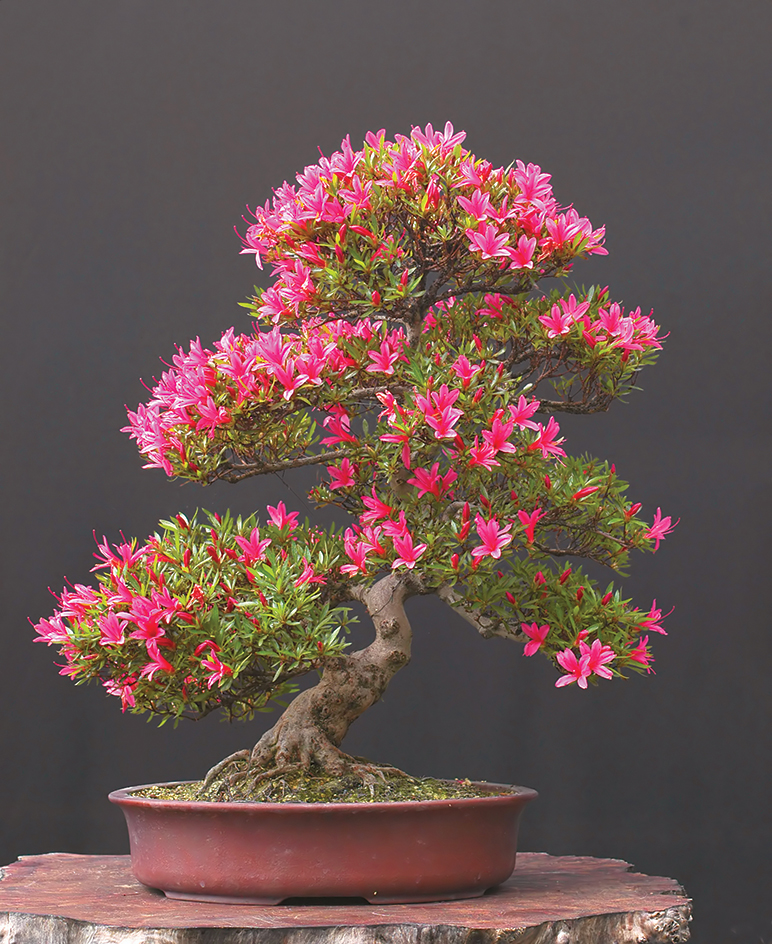Bonsai, << BOHN sy, >> is the art of growing miniature trees or other plants in containers or on rocks. The word can also apply to the plant itself. Bonsai is a Japanese word meaning potted tree. The art form originated in China, probably during the early A.D. 200’s, then spread to Japan. It gained worldwide popularity in the late 1900’s.

There are various ways to start a bonsai. Plants stunted in their natural setting can be transplanted into containers. Growers develop other bonsai from young plants, or from seeds or cuttings. Conifers (cone-bearing trees) are favorites, but deciduous (leaf-shedding), flowering, and tropical trees are also popular. Other plants used include bamboo and azalea. Most bonsai range from 2 inches to about 3 feet (5 to 90 centimeters) high.

Growers have long used the same methods to care for bonsai. They carefully monitor the plants, and control the intake of water and sunlight. They also use special soils, fertilizers, and feeding schedules. With proper care, bonsai can outlive their creators. Some plants in China and Japan are more than 800 years old.
Bonsai blends natural beauty with art. There are specific styles, such as formal upright, cascade (leaning over the container), and windswept. These styles developed in China and Japan and reflect forms in nature. Growers prune and repot the plants to create and maintain their shapes. One styling method is to wind wire around the branches to bend them into a desired form. Another is to remove certain branches entirely. Bonsai growers also pinch off new growth. Removing the tips from a plant stunts its growth and strengthens the foliage.
Each plant needs a suitable container. A pot’s size should be in proportion to the plant, and the pot should add to the plant’s appearance. Most pots are made of fired clay and have specialized shapes. Conifers are usually put into earth-colored containers. Pots for deciduous and flowering trees may be brightly colored to highlight flowers or seasonal hues. Sometimes growers use rocks or rock slabs for unusual trees or plantings made to look like forests.
